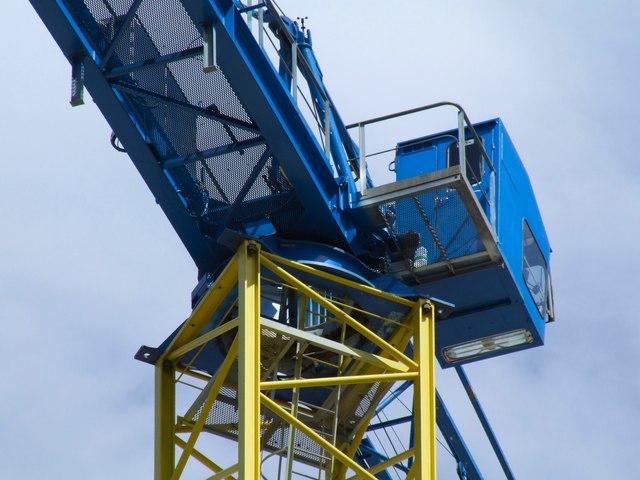Green Lane, Lincoln
Introduction
The photograph on this page of Green Lane, Lincoln by Dave Hitchborne as part of the Geograph project.
The Geograph project started in 2005 with the aim of publishing, organising and preserving representative images for every square kilometre of Great Britain, Ireland and the Isle of Man.
There are currently over 7.5m images from over 14,400 individuals and you can help contribute to the project by visiting https://www.geograph.org.uk

Image: © Dave Hitchborne Taken: 1 Jul 2008
Tower Crane - The tall yellow girder work is the mast, or tower, which gives the crane its height. This is attached to a base at ground level, which is in turn bolted to a large concrete pad. At the top of the mast/tower is the slewing unit, the gear and the motor that rotates the crane. The long horizontal jib, or working arm, is the portion of the crane which carries the load (seen extending away from camera). A trolley (not seen in shot) runs along the jib to move the load towards or away from the mast/tower. The shorter horizontal arm (nearest camera) is the machinery arm, which contains the crane's motors, that lifts the load, and electronics as well as the large concrete counterweights. Fixed to the side of the jib and arm and above the mast/tower, is the operator's cab. This position allows an uninterrupted view ahead of the load, unless construction work is blocking the view. In this case a person is employed below to signal movement of the load. Overall view of the crane from the rear, which shows the concrete counterbalance weights and the trolley http://www.geograph.org.uk/photo/875792 Close-up view of the operator's cab, from the front http://www.geograph.org.uk/photo/875803 Overall view of the crane from the front, which shows the trolley http://www.geograph.org.uk/photo/875804 If you look top centre, you will see a wind speed detector. Or anemometer, to give it its proper title.

